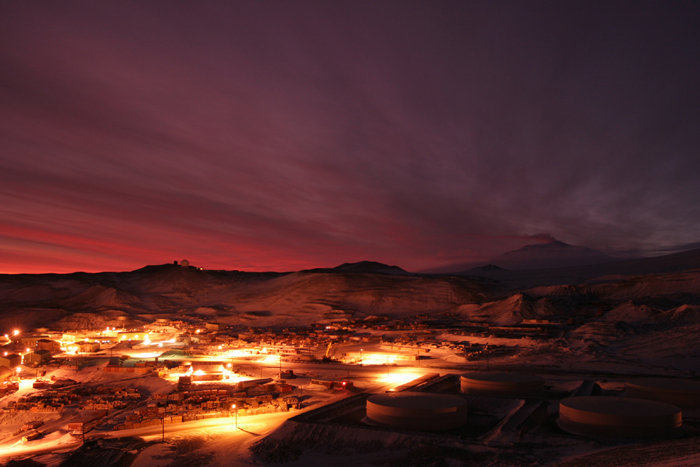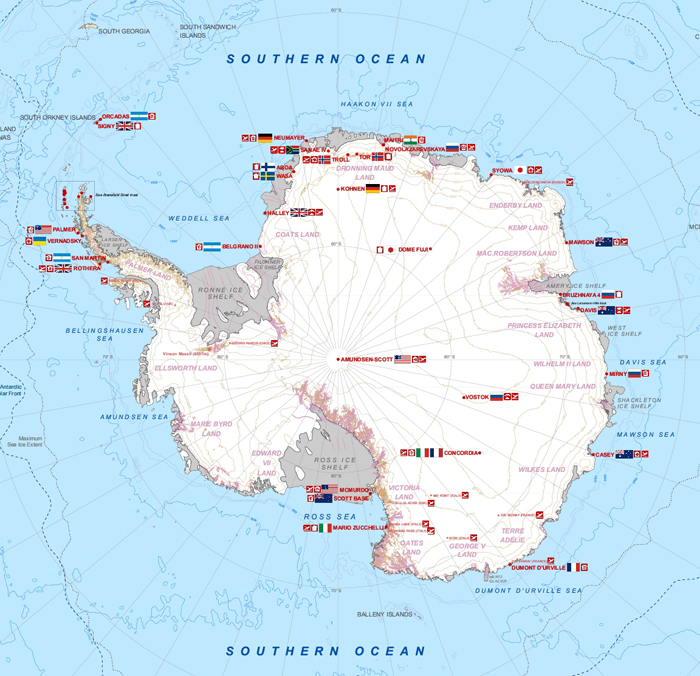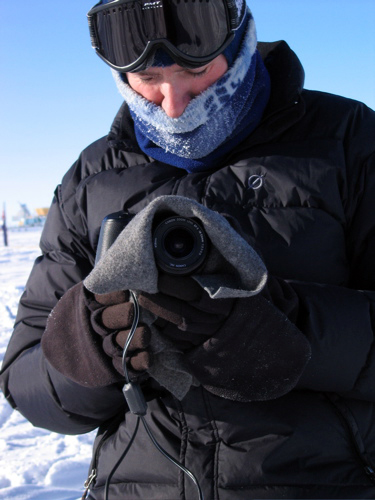|
Caught on camera48-hour Antarctic film competition goes internationalPosted August 8, 2008
Those folks spending the winter in Antarctica will have to catch most of this summer’s blockbuster movies on DVD by the time they board a plane for all points north. But that doesn’t mean there’s not fresh entertainment to watch as the circling sun starts to poke its way above the horizon. Ambitious filmmakers from all corners of the continent spent two days at the beginning of August creating short movies for a 48-Hour Film festival and competition. Anthony “Antz” Powell, a communications engineer wintering at McMurdo Station “We normally have a winter film festival of some sort, and then a couple of years ago the 48-hour filmmaking competitions were becoming popular, so I thought it would be a good way to drum up some extra films from McMurdo and Scott Base,” he said on the phone from McMurdo Station. This year, Powell has recruited amateur filmmakers from the other two U.S. research stations, South Pole “I thought it would be an interesting way to get into contact with the other bases — something to give people to talk about and do together,” he said. At least five other stations are taking up cameras for the competition: Australia’s Mawson “At Casey, we are all really excited to be involved in the 48-hour film fest because it gives us a great chance to work on a group activity that is fun and creative,” said Dominic Taylor, a winter-over at the Australian research station on the East Antarctic coast, over e-mail. “Also, it’s a fantastic opportunity to take part in an event that can bring together all the different wintering communities, and help create a continent-wide culture that allows us to share an insight into each other’s world,” he added. The logistics hub for the Australian Antarctic program, Casey is home to 19 people this winter who also “take jolly trips” to remote field huts for recreation, Taylor said. The small population even supports a band called “Comfy Chairs” that puts on regular live music performances. The 11 people wintering at the British Antarctic Survey’s Halley Research Station, on the other side of the continent in West Antarctica, spend some of their leisure time playing everything from darts and table tennis to the latest computer games. Many are also avid photographers, said Halley Winter Station Commander Agnieszka Fryckowska, though “our experience of making movies is minimal, but we are keen to try new things, and saw this as a great opportunity to be part of the Antarctic community.” Said Powell of the international flavor of this year’s film competition, “The idea seems to have struck a creative chord with many stations. Given the distances that separate us, yet the common hardships of wintering, it is a great way to build a more intimate relationship with the other stations and have fun.” The rules of the competition are pretty simple. Filmmakers have 48 hours to shoot and edit a five-minute movie during their off-hours time. Just before the contest begins, participants receive a list of props, lines and characters that they must include in the movie. For example, one of the props in 2006 was a bowl. In some of the films from McMurdo, the dishware played a starring role, with one director spoofing the TV show “Cops” as the movie followed one officer on the lookout for shady characters peddling plastic bowls in "Cops: McMurdo." In a short clip made by Powell, "Bowl on the Run," a bowl escapes from McMurdo’s dish room. It zips and skids its way around the main building before a dishwasher captures it and orders it back to the drying rack. Both films underscore the McMurdo cultural phenomenon of disappearing dishes, which inevitably end up in people’s rooms for an indeterminate amount of time. This year’s props include a cardboard box and the inclusion of any bodily noise except for speech. “It’s actually forces you to think really creatively and come up with something in a hurry,” Powell said of the contest format. “Keeping it to five minutes forces [amateur filmmakers] to keep it short, interesting and to the point.” The short length also keeps file sizes small, he added, and with today’s compression technology, the stations will be able to download the films for later viewing and judging without disrupting the transfer of science data. Powell said he plans to enter the competition himself (winners are picked by popular vote), despite a busy work schedule that sends him on bumpy trips across the ice shelf to Black Island to work on communications equipment. He also uses every free moment away from work to complete a feature-length film he is creating under the Antarctic Artists and Writers Program Largely a time-lapse movie using stunning imagery to depict a year in Antarctica, the film will also include some regular video and interviews with U.S. Antarctic Program participants. “It is starting to take shape nicely,” Powell said, “I have a screenplay worked out, and will begin putting together actual sequences shortly. … There’s a lot of footage there now to work with. I think the final product is going to look pretty good.” NSF-funded work in this story: Anthony Powell, Antarctic Artists and Writers Program, Award No. 0637614 |



For USAP Participants |
For The Public |
For Researchers and EducatorsContact UsU.S. National Science FoundationOffice of Polar Programs Geosciences Directorate 2415 Eisenhower Avenue, Suite W7100 Alexandria, VA 22314 Sign up for the NSF Office of Polar Programs newsletter and events. Feedback Form |




